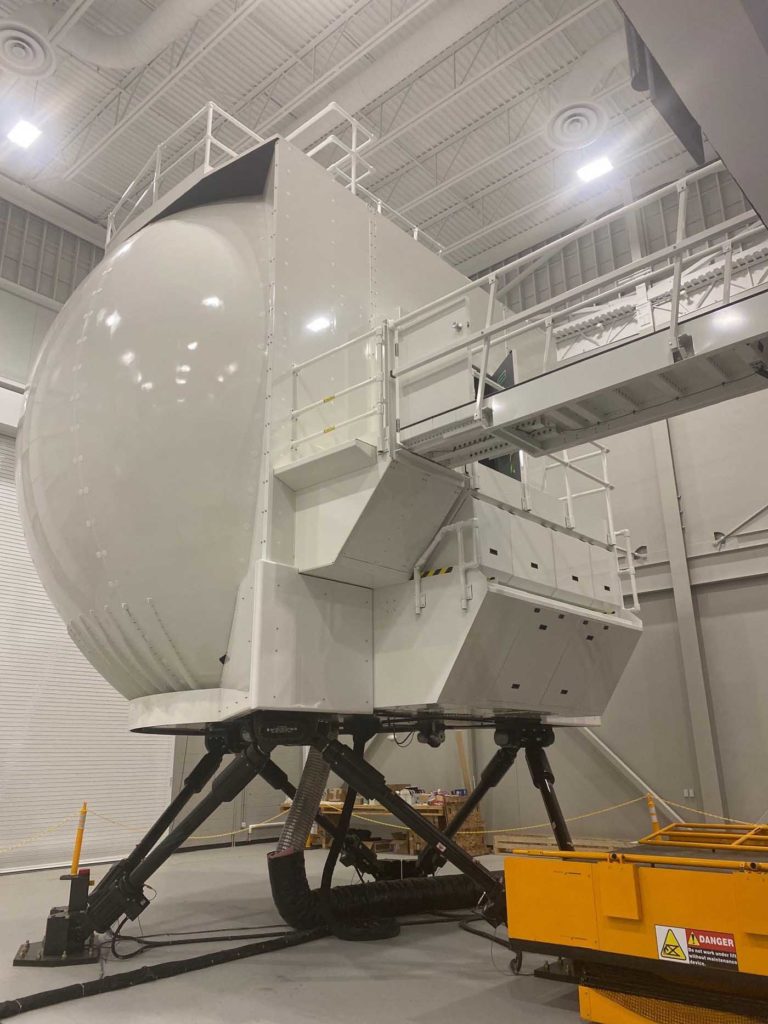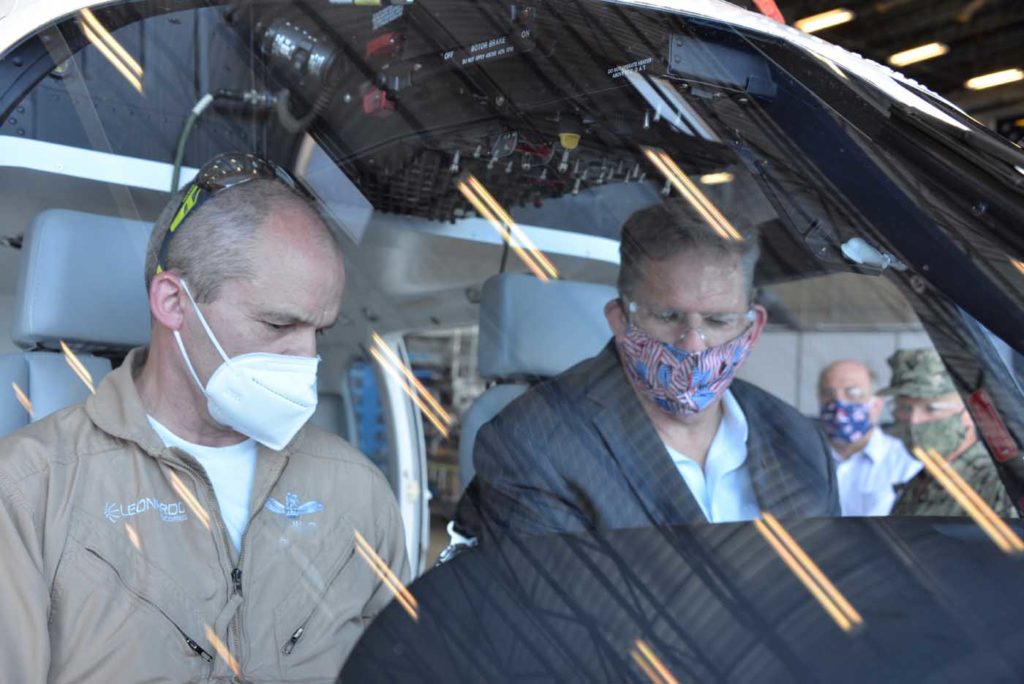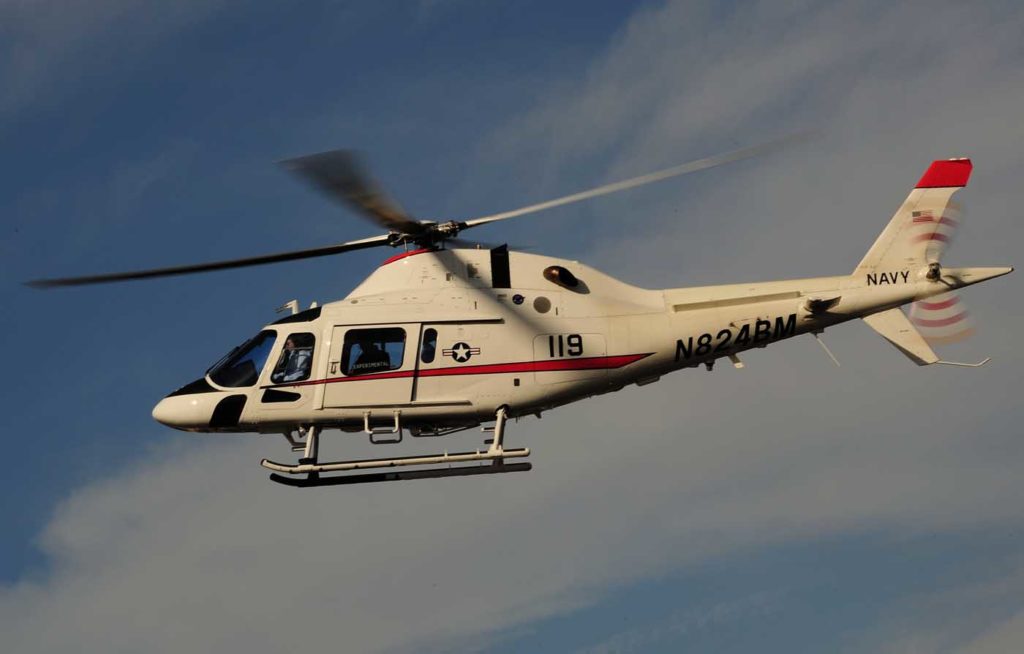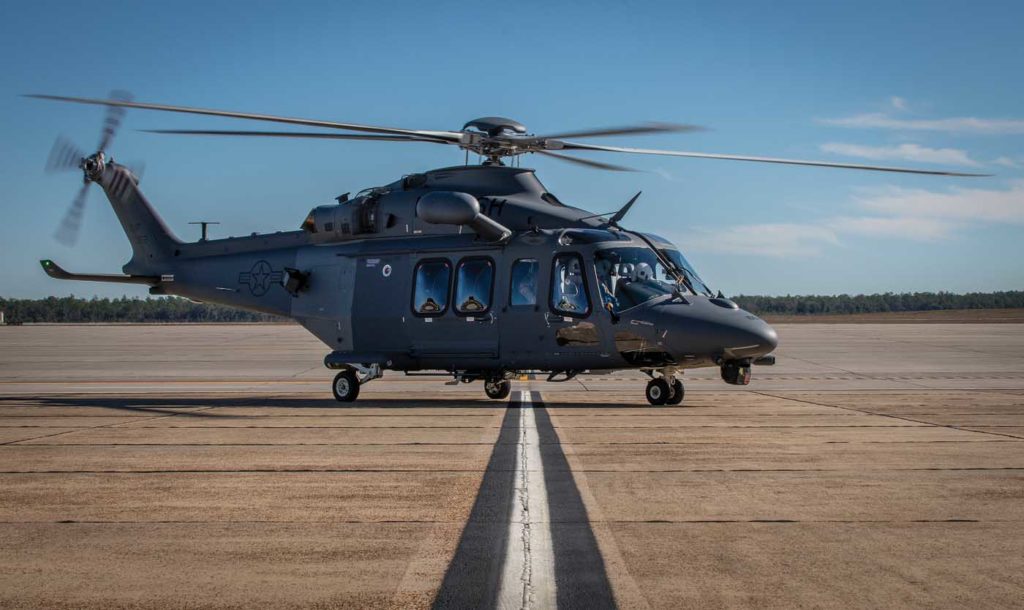
Vertical got a sneak peek at Leonardo’s $80 million U.S. training center ahead of its official opening.
Leonardo’s comprehensive new U.S. training center, co-located at the company’s production facility in Philadelphia, Pennsylvania, will officially open its doors this month. A project first launched in October 2018 — before the Italian major knew it would win its first U.S. military contract as a prime — it’s an $80 million investment in the company’s continued North and Latin America expansion.

Modeled on Leonardo’s facility in Sesto Calende, Italy, the design of the new training academy is driven by proximity. Previously a warehouse, the building is co-located with the rest of Leonardo’s manufacturing and support services in Philadelphia, where civil and military variants of the AW119 and AW139 — as well as the AW609 civil tiltrotor — are manufactured.
“It’s critical that we’re on a single campus, close to where the aircraft are being produced, close to engineering, close to the entire support stream from sales through marketing, all the way into the commitments and contracting,” said Terry Eichman, head of training operations for Leonardo’s business in the U.S.
Eichman, who joined the company in 2018 to oversee construction of the facility, brings more than 35 years of experience across various roles and segments of the helicopter industry, including key roles with Bell Training Academy and as Airbus Helicopters’ head of training in North America. Leonardo’s leadership convinced Eichman they wanted to invest heavily in training as a core competency.

“When I joined, we had some rough plans. This was a warehouse. We had to do a lot of work to accommodate full flight simulators [FFS] and the maintenance training devices,” Eichman told Vertical during a tour of the new training academy. “But more importantly, having been a part of a lot of other designs and fielding and commissioning of academies, there are things I believed we needed to implement regarding staff, customer flow, and things like that.”
The building is designed to provide training customers a smooth end-to-end experience, from check-in to classrooms and simulation activities. Six brief and debrief rooms for simulated missions are located just steps away from a Level D sim — a huge improvement over Leonardo’s previous local training offering, which for the AW139 required students to split time between the Philadelphia facility and use of a FFS in Whippany, New Jersey.
Pilots also have access to exclusive exercise and meditation rooms to recharge as they see fit.
“Customers will sometimes arrive at four in the morning for briefings and [sim] flight and then have another flight at 10 in the morning,” Eichman said. “So when they’re between their first and second flights in the simulator, we have a quiet room that is 100 percent for the customers to go in and relax, check their email, and decompress.”
Ten classrooms can house between 12 to 34 students, depending on the room (or six to 18 while observing social distancing and Covid safety protocols). Instructors and students are equipped with state-of-the-art technology designed for interactive lessons; pilots-in-training can access quizzes on-demand and instructors can hone in on individual students who need extra attention or emphasis.

The new training center was granted part 142 approval by the Federal Aviation Administration (FAA) the evening before Vertical visited, on Feb. 16. The first students have begun ground flight training and were slated to have access to the AW139 FFS, moved in from Morristown, by the end of February. Re-certification of the AW169 simulator is slated to begin March 30 and Leonardo intends to start the same process for its Level D AW609 FFS toward the end of the summer. Each flight sim can be swapped out of the high-fidelity, large field-of-view dome display system in an eight-hour overnight shift.
Maintenance training devices for the AW119, 139, and 609 are also housed on-site, as well as classrooms; the 119 device supports six different models of the helicopter, covering approximately 85 percent of the fleet used by customers in the Americas.
“We have enough classrooms on the first floor to handle all of the maintenance and avionics and electrical training courses,” Eichman said, showing Vertical around the section of the facility dedicated exclusively to maintenance training. “One of the bits of feedback that is consistent for customers is to make sure their people are effectively and efficiently trained. Don’t waste people’s time. Everything we’ve set up here is to answer to that feedback.”
All told, Eichman expects to graduate between 20 and 25 new helicopter pilots each week and 10 to 14 maintainers. Two-thirds of that throughput he expects will be trained on the 139/169/609, with the single-engine 119 comprising the rest. Leonardo declined to comment on what percentage of training would be delivered to civil versus military customers.
Leonardo’s new training academy is just one part of the company’s investment in the Americas. Production of the 119 is ramping up to meet growing civil and military orders, including Leonardo’s successful bid to offer a variant as the U.S. Navy’s replacement training helicopter — the TH-73. The first single-engine helicopter in decades to achieve instrument flight rules (IFR) certification in the U.S., the 119 beat out incumbent Bell’s 407GXi and Airbus’s H135 for the contract to replace the U.S. Navy’s aging TH-57 Sea Rangers.

About three 119s per month produced at the Philadelphia facility will be delivered to the Navy at NAS Whiting Field, according to Leonardo program manager Andrew Gappy, with the first aircraft expected to be delivered soon and more than half a dozen airframes currently in production.
Between that contract, the U.S. Air Force’s selection of the Boeing-Leonardo MH-139 to replace its aging UH-1N Hueys, and other customers, surging demand necessitated more hangar space — a problem Leonardo solved by acquiring a facility across the street previously owned by Crown Holdings.
Production of the AW609, ramping up as the company continues to work through certification with the FAA, will be moved into the new hangar, large enough for four or five tiltrotors to be worked on. Moving the winged aircraft out of Leonardo’s main production line will free up space for more than a dozen 119s or 139s on the line.

“I’ve been here 15 years now and from my evolution here, this is the fulfillment of a couple of goals,” Bill Hunt, CEO of Leonardo in Philadelphia, told Vertical. “One is for Philadelphia to be recognized as a developmental center for the company. Two was to win military work, to get in the inventory of the Department of Defense.”
“That then brings in the case of the 609. We were able to convince the parent company that as we’re moving from a flight test program into final development and a production program, what better place to put the 609 than here in our active production lines. That put us on the map as an engineering hub within the company. . . . It raised our level of expertise within Leonardo Helicopters.”
In addition to civil interest in the tiltrotor, such as from launch customer Era Group, Hunt told Vertical he sees specific non-military opportunities for the 609 on the defense side of the market as well. He declined to elaborate further or give examples.
The next investment for Leonardo’s U.S. branch will be a 100,000-square-foot facility just across from NAS Whiting Field, where the company will fulfill its contract requirements to the Navy over the life of the TH-73 fleet as well as other civil customers in the region.

“We’ve already opened a temporary hangar so we can establish our part 145 with local capability, and then phase two is to open the full facility. It will be an extension of [AgustaWestland Philadelphia] just like our rotor blade repair facility in Broussard, Louisiana,” Hunt said. “We’ve looked at making sure that the 609 can have a localized maintenance center down there as well.

“I can’t say enough how great this team has done in setting us up for the future. If you sat here a few years ago and asked me what I thought about us building 210 aircraft for the Air Force and the Navy, I would have said, ‘You know, I’m ready’ — but it was more a wish and a dream at that point.”

